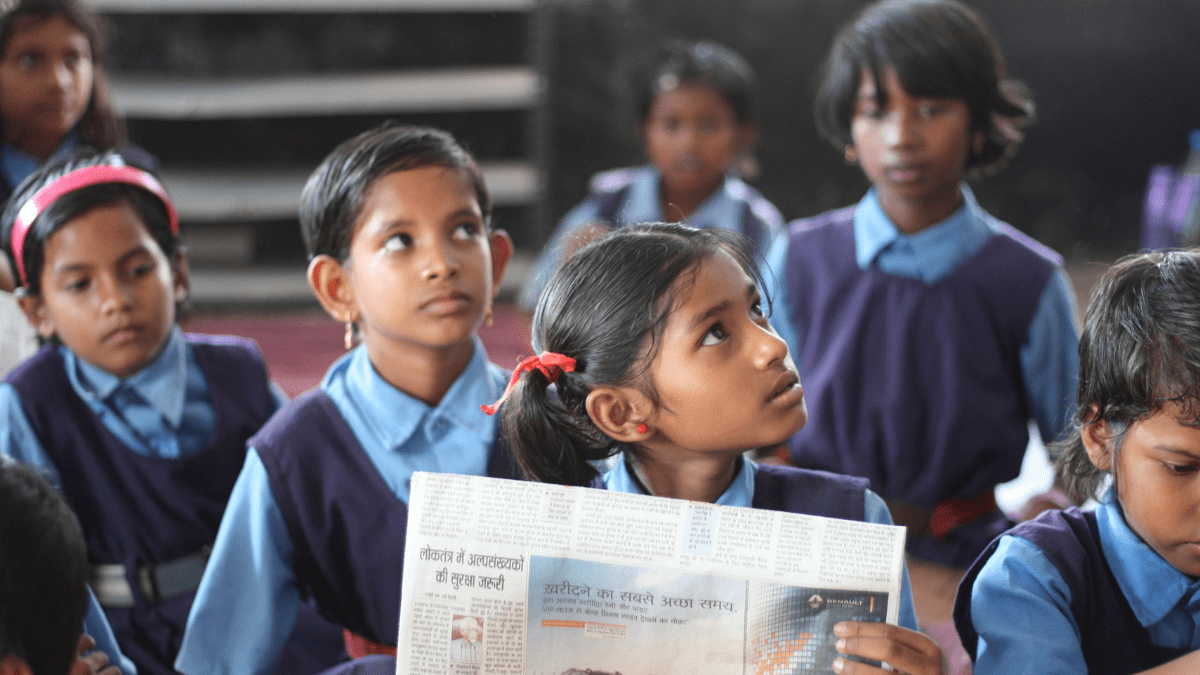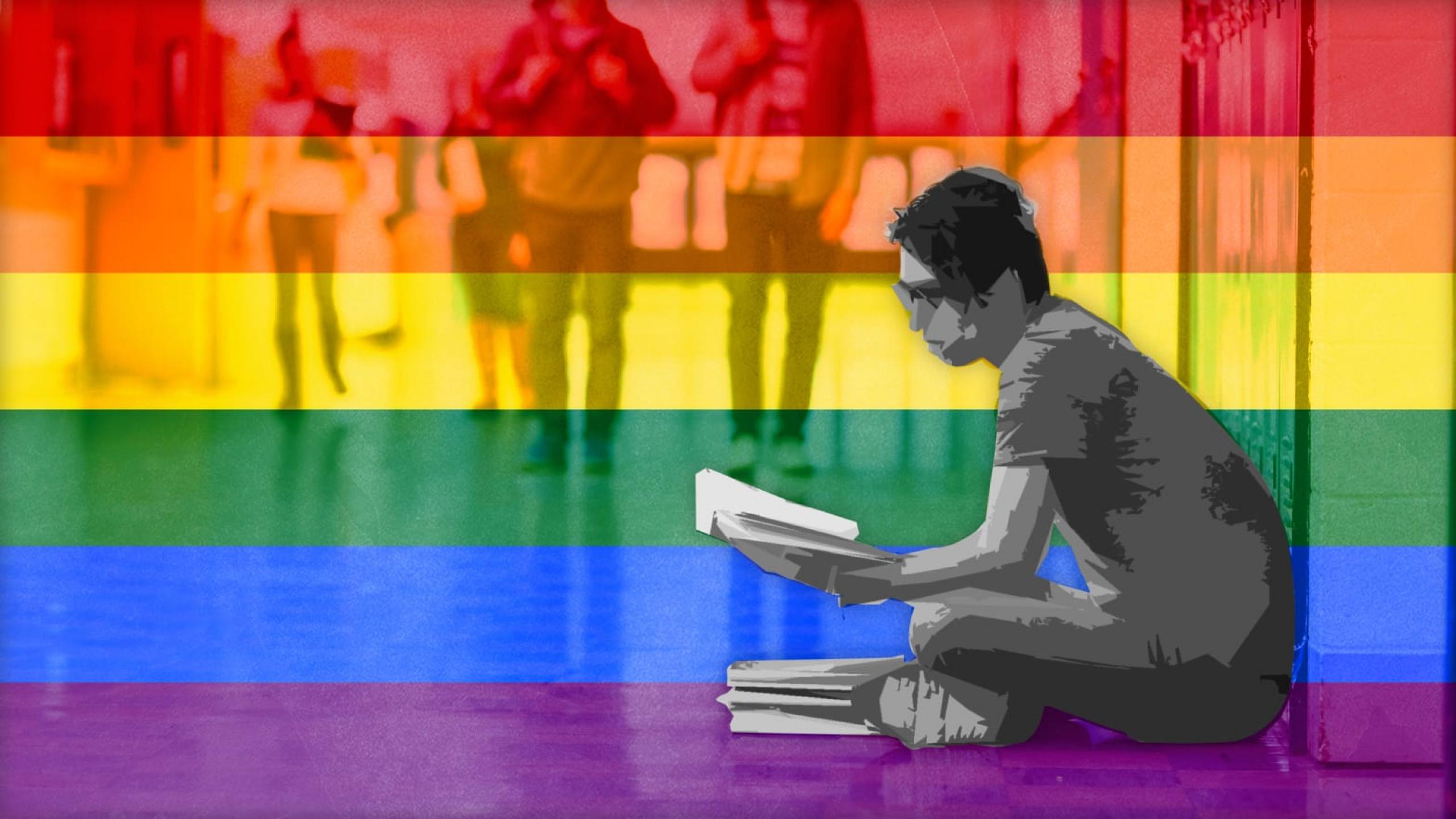The Shiv Nadar group of schools drew flak for adding non-binary as a student gender option on a parent feedback form from some of the parents, the right-wing on Twitter, and even the National Commission for Protection of Child Rights (NCPCR).
The NCPCR received a complaint regarding the use of ‘inappropriate terminology’ by the school and in response, it issued a notice to educational institutions in Uttar Pradesh and Haryana regarding this.
The NCPCR received a complaint regarding the use of ‘inappropriate terminology’ by the school and in response, it issued a notice to educational institutions in Uttar Pradesh and Haryana regarding this. The notice said the Transgender Persons (Protection of Rights) Act of 2019 and the newly-implemented National Education Policy only use the term transgender and that is the only term educational institutions must use. Further, the NCPCR has asked State governments to ensure educational institutions don’t use any other non-approved terminology.

The NCPCR’s notice betrays its lack of understanding of gender identity and raises questions about how those incharge of implementing policies for the protection of queer folk know little about those they claim to speak for. Not all transgender people identify as non-binary and neither do all non-binary people identify as transgender. Ideally, the school should have included both non-binary and transgender as options on the form but to claim non-binary is not approved terminology or imply it is somehow inappropriate invisibilities non-binary as a valid gender identity. The Transgender Persons (Protection of Rights) Act, 2019, that the NCPCR mentioned in their notice doesn’t deem any terminology appropriate or inappropriate nor does it consist of an approved list of terminology to refer to various gender identities.
The Transgender Person (Protection Rights) Act, 2019
The Transgender Persons (Protection Rights) Act of 2019 uses transgender as an umbrella term to include various gender and sexual identities. The Act defines a transgender person as ‘a person whose gender does not match with the gender assigned to that person at birth and includes trans-man or trans-woman (whether or not such person has undergone Sex Reassignment Surgery or hormone therapy or laser therapy or such other therapy), person with intersex variations, genderqueer and person having such socio-cultural identities as kinner, hijra, aravani and jogta.’
The Act considers non-binary folks as transgender but this may not be the label many non-binary people self-identify with. How one experiences their gender is unique and nuanced and cannot be generalised and neither can a one-size-fits-all approach be taken to gender labels. The school including non-binary as a gender option doesn’t violate the 2019 Act in any way and a simple reading of the Act says so.
The NCPCR’s insistence on sticking to the word of the law and not the spirit of it raises questions about whether government bodies have a complete understanding of queer identities and strengthens the case for including more queer folks, not only in the process of creating policy relating to them but in the process of implementing it as well.
Further, the inclusion of more queer people in these bodies will ensure that policies for the protection of the rights of queer folks are not poorly implemented due to internalised queerphobia or transphobia. In 2021, the National Council for Educational Research and Training (NCERT) released a manual for the inclusion of transgender children in schools. After right-wing outrage and a complaint from an RSS member, the NCPCR issued a notice to the NCERT regarding the provisions involving gender-neutral bathrooms and infrastructure, awareness regarding puberty blockers, and eliminating the segregation of students by gender for school activities; following which the latter took down the manual. The NCPCR has also seen a rightward shift in the last few years with it selectively pursuing politically-motivated matters. At a time when the issue of equal rights for queer folks is being politicised, only more queer voices in positions of authority can ensure that queer interests aren’t being sidelined for ideological idiosyncrasies and political gains.
Right-wing outrage
There has been outrage from the right over the inclusion of non-binary in the form, claiming this is ‘woke politics’. An inclusive form that allows students to identify as who they are without forcing them to fit their identity into a binary imagination of gender to be able to check a box is undoubtedly a step in the right direction and should be applauded. It is outrageous that the issue of the inclusion of gender and sexual minorities and the mainstreaming of these identities is being politicised.
Many also claimed that since the form was for parents of children of various age groups, including those as young as three, the inclusion of non-binary as an option was inappropriate. Insisting children are too young to understand their gender identities and self-identify outside of the gender binary is a common transphobic talking point across the world and one that holds no merit. Transphobes also claim that awareness of other gender identities is age-inappropriate and creates gender confusion for children.
Except, the opposite is true. There is no appropriate age for children to know or assert their gender identities. Insisting children are too young to know their gender identity and adopt authentic gender expressions is only transphobia speaking. Exposing children only to the gender binary and forcing them to conform to labels and gender expressions that may not be true for them will only do them harm. Being exposed to labels for various gender identities will help students who don’t fit into the gender binary to find appropriate vocabulary to express and assert their identities.
Schools as safe spaces
Creating an environment for students to discover their identities and assert and express them is essential for schools to be safe spaces for students of all sexual orientations and gender identities. Students identifying outside the cisheteronormative standard face bullying, harassment, and even threats to their lives. Encouraging an expansive view of gender from a young age and age-appropriate information and awareness that will help fellow students be well-informed allies is essential to protecting queer students in schools.
Admonishing a school for taking a step in the right direction to create a safe space for its queer students is appalling.
Admonishing a school for taking a step in the right direction to create a safe space for its queer students is appalling. Institutionalised transphobia and the othering of trans and queer students make educational institutions extremely hard to navigate for them and create barriers to accessing education. A survey conducted in Delhi schools found that 30 per cent of transgender students faced bullying and harassment due to their gender identity. A UNESCO-backed study in Tamil Nadu found that nearly 60 per cent of queer respondents said they had been bullied physically in school, while 43 per cent said they had faced sexual harassment in their schools. With stats like these, the urgency of creating and fostering an inclusive environment in schools, where queer students are not only safe but can thrive, is incontestable. Shiv Nadar took a small, but necessary, step in this direction.
The safety of trans and queer students cannot be compromised for political appeasement. The NCPCR is a body for child rights, which includes the rights of children of various gender identities. The NCPCR creating its own rules regarding approved and non-approved terminologies for gender identities due to right-wing outrage is a testament to it placing politics above its objective of safeguarding children’s rights. It is a sorry state of things that even today, despite India legally recognising that gender doesn’t exist as binary, we are having to debate inclusion and are rebuking those paving the way for inclusion in practice, not just words.
A binary view of gender impedes inclusivity. Institutional frameworks often do not make room for diverse gender identities outside of the man/woman binary. This leads to the invisibilisation and sidelining of millions who can’t assert and define their identities authentically.
While India recognises that gender isn’t binary, educational institutions still remain transphobic.
While India recognises that gender isn’t binary, educational institutions still remain transphobic. The barriers trans and queer students face in accessing education are numerous and schools committing to incorporating inclusive practices is the only way to prevent the othering and harassment of these students. While Shiv Nadar should include transgender as a distinct gender option from non-binary in its form, the best thing to do – for this school and all others – is to simply not have boxes within which to fit expansive identities. Allowing students to self-identify with whatever labels best represent them is a small but significant step towards the inclusion of all children of various gender identities. Nobody should have to redefine their identity or simplify it to check a box.
About the author(s)






